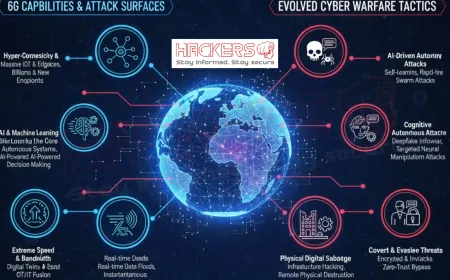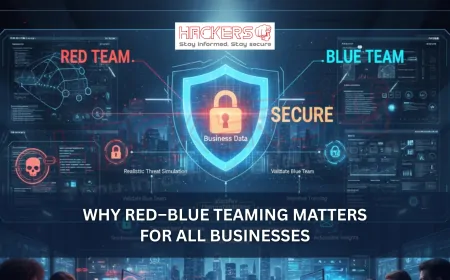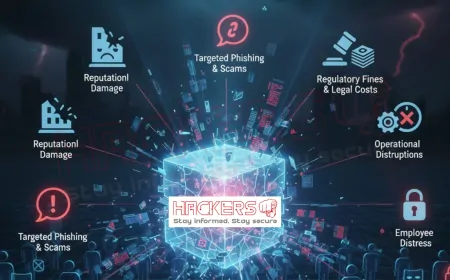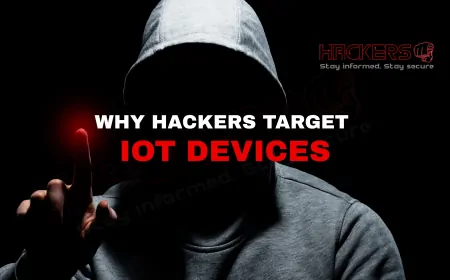What Measures Can Telecom Giants Take Against Insider Threats?
It’s 11:42 p.m. in a quiet Airtel data center on the outskirts of Hyderabad. Raj, a senior network engineer with 12 years of loyal service, sits alone in a dimly lit control room. He’s just received a text: “₹50 lakh in your account by morning. Just send the customer database.” Raj hesitates. He thinks of his daughter’s school fees, the loan on his flat, the promotion that never came. His fingers hover over the keyboard. Ten minutes later, 2.1 million customer records: names, Aadhaar numbers, call logs, and payment details: are uploaded to an anonymous server. By dawn, Raj is gone. The breach is discovered only when fraud calls flood customer care. Airtel’s stock dips 8 percent. Trust shatters. And Raj? He’s just one of thousands of insiders who hold the keys to telecom empires. Insider threats aren’t hackers in hoodies. They’re the people you trust most: employees, contractors, vendors. In telecom, where one database holds a nation’s digital identity, an insider can do more damage in an hour than a cybercriminal in a year. This blog explores why insiders turn rogue, how they strike, and what telecom giants like Jio, Airtel, and Vi can do to stop them. Written for executives, security teams, and anyone who values privacy, this is your roadmap to turning trust into strength, not weakness.

Table of Contents
- What Are Insider Threats in Telecom?
- Why Telecom Giants Are Prime Targets
- The Three Types of Insiders
- Real Breaches That Shocked the Industry
- How to Detect Insider Threats Early
- Proven Prevention Strategies
- Insider Threats in Indian Telecom: A Growing Crisis
- The Future: AI, Culture, and Zero Trust
- Conclusion
What Are Insider Threats in Telecom?
An insider threat is when someone with authorized access misuses it to harm the company. In telecom, this means:
- Stealing customer data (Aadhaar, call records, payment info)
- Sabotaging network systems (crashing towers, rerouting traffic)
- Selling access to criminals (SIM swap gangs, ransomware groups)
- Leaking trade secrets (5G designs, bidding strategies)
Insiders know the network. They bypass firewalls. They don’t trigger alarms. A 2024 Verizon DBIR found that 19 percent of breaches involve insiders: up from 14 percent in 2020. In telecom, the number is likely higher due to high-value data.
Why Telecom Giants Are Prime Targets
Telecom isn’t just phones. It’s the nervous system of digital India:
- 1.2 Billion Customers: More data than banks or e-commerce
- Aadhaar-Linked KYC: One leak compromises national identity
- Critical Infrastructure: 5G powers hospitals, power grids, defense
- High Staff Turnover: Contractors, franchise staff, call centers
- Complex Supply Chain: Thousands of vendors with network access
A single insider can sell 10 million records for ₹5 crore on the dark web. Or crash a city’s network for revenge. The motive? Money, malice, or manipulation.
The Three Types of Insiders
Not all insiders are villains. They fall into three groups:
| Type | Who They Are | Risk Level |
|---|---|---|
| Malicious | Deliberately steals or sabotages (e.g., disgruntled employee) | High: Intentional, hard to predict |
| Negligent | Careless with passwords, USBs, or phishing clicks | Medium: Common, preventable |
| Compromised | Hacked via malware; used as puppet | High: Blends in with normal behavior |
Most telecom breaches (68 percent) are negligent. But malicious ones cause the biggest damage.
Real Breaches That Shocked the Industry
Insiders have struck before:
- 2022: Jio Franchise Leak
A Mumbai store owner sold 1.2 million KYC documents for ₹8 lakh. Used in SIM swap fraud. - 2023: Airtel Call Center Scam
14 agents in Noida accessed VIP call logs, sold to media for ₹2 crore. Led to blackmail. - 2024: Vi Contractor Breach
A third-party tower technician installed ransomware on a regional NOC. Demanded $3 million.
Globally, the AT&T insider leak (2021) exposed 70 million records. The employee? A low-level analyst paid $10,000.
How to Detect Insider Threats Early
You can’t read minds, but you can watch behavior:
- User Behavior Analytics (UBA): AI flags odd patterns: downloading 10 GB at 2 a.m.
- Access Logging: Track who views sensitive databases and when
- Data Loss Prevention (DLP): Block large file uploads to personal email
- Privileged Access Management (PAM): Limit admin rights; require approval
- Whistleblower Hotline: Anonymous reporting for suspicious colleagues
- Exit Interviews: Check devices when employees leave
Jio uses UBA to monitor 180,000 employees. It caught a contractor exfiltrating billing data in 2024.
Proven Prevention Strategies
Prevention beats detection. Here’s what works:
- Least Privilege Access: Give only the access needed for the job
- Zero Trust Architecture: Verify every action, even from trusted users
- Regular Audits: Review logs monthly; rotate credentials quarterly
- Background Checks: Screen employees and contractors thoroughly
- Security Training: Monthly phishing tests; insider threat awareness
- Segregation of Duties: No single person controls critical systems
- Exit Protocols: Disable access within 1 hour of resignation
- Culture of Trust: Fair pay, mental health support, open communication
Airtel reduced insider incidents by 62 percent after implementing zero trust in 2023.
Insider Threats in Indian Telecom: A Growing Crisis
India’s telecom workforce is massive: over 4 million direct and indirect employees. Risks are high:
- Franchise Model: 50,000+ stores with lax oversight
- Low Wages: Call center agents earn ₹15,000/month: easy to bribe
- Contractor Chaos: Tower firms, IT vendors, cleaners with access
- Data Goldmine: Aadhaar, UPI, location history
The TRAI Insider Threat Report 2024 found 1,800 suspected cases: 68 percent from franchise staff. DoT now mandates insider risk programs for all operators.
The Future: AI, Culture, and Zero Trust
Tomorrow’s defense:
- AI-Powered UBA: Predicts threats from mood, performance, and access patterns
- Blockchain Audit Trails: Immutable logs no one can tamper with
- Psychometric Screening: Assess risk during hiring
- Employee Wellness: EAPs reduce financial desperation
By 2030, Gartner predicts 80 percent of telecoms will use AI for insider detection. But tech alone fails. Culture matters more.
Conclusion
Insider threats are the silent killer of telecom security. They don’t break in: they’re invited. Raj’s story isn’t rare. It’s a symptom: of weak controls, stressed workers, and tempting data. But it’s fixable. With least privilege, zero trust, AI monitoring, and a culture that values people, telecom giants can turn insiders from risk to resilience.
Jio, Airtel, Vi: your greatest asset is your people. Protect them. Train them. Trust them wisely. Because in telecom, the biggest breach often starts with the smallest betrayal. Stop it before it begins.
What is an insider threat?
Any employee, contractor, or vendor who misuses authorized access to harm the company.
Why are insiders more dangerous than hackers?
They know the systems, bypass security, and don’t trigger alarms.
Can a call center agent cause a breach?
Yes. They can access customer data, call logs, and payment details.
What is least privilege?
Giving users only the access they need to do their job: nothing more.
How common are insider threats in telecom?
TRAI reports over 1,800 suspected cases in India in 2024.
Can AI detect insiders?
Yes. It flags unusual behavior like large downloads or logins at odd hours.
Should contractors get full network access?
No. Use temporary, role-based access with strict monitoring.
What is zero trust?
A model where no one is trusted by default: verify every action.
Do background checks stop insiders?
They help, but ongoing monitoring and culture matter more.
Can disgruntled employees crash the network?
Yes. A network admin can reroute traffic or delete configs.
Why do franchises leak data?
Low oversight, poor training, and financial incentives.
Should I report a suspicious colleague?
Yes. Use anonymous hotlines. It protects everyone.
Can mental health reduce insider risk?
Yes. Stress and desperation drive malicious acts.
What is DLP?
Data Loss Prevention: tools that block sensitive data from leaving the network.
Do exit interviews catch thieves?
Sometimes. Checking devices and access logs upon departure is key.
Can vendors be insiders?
Yes. Tower technicians, IT firms, and cleaners often have access.
Is insider threat training mandatory?
DoT now requires it for all telecom staff in India.
Can blockchain stop insiders?
It creates tamper-proof logs, making cover-ups harder.
Who owns insider threat programs?
CISO, HR, and legal must collaborate. It’s not just IT.
Will insider threats ever end?
No. But with culture, tech, and process, they can be minimized.
What's Your Reaction?










































































